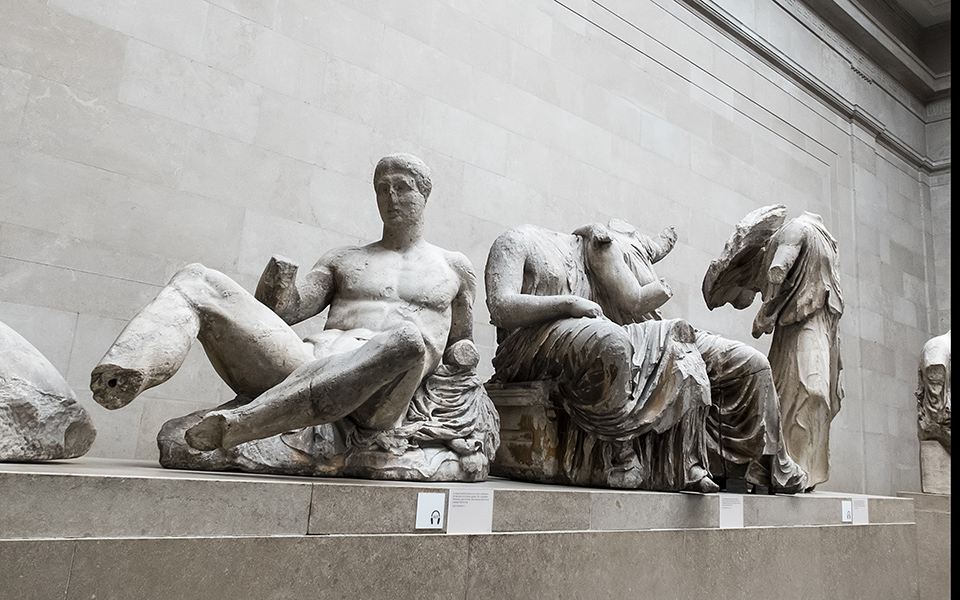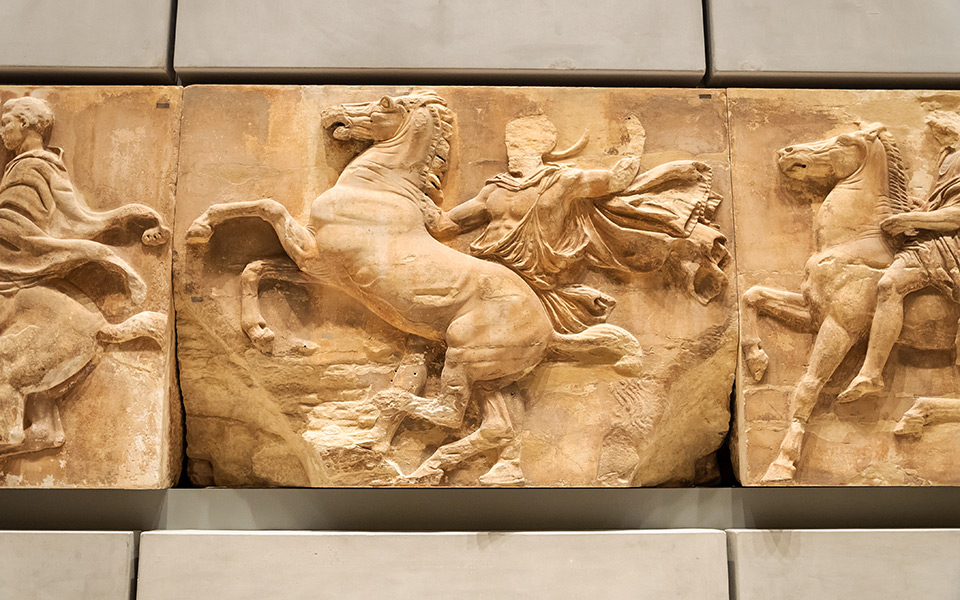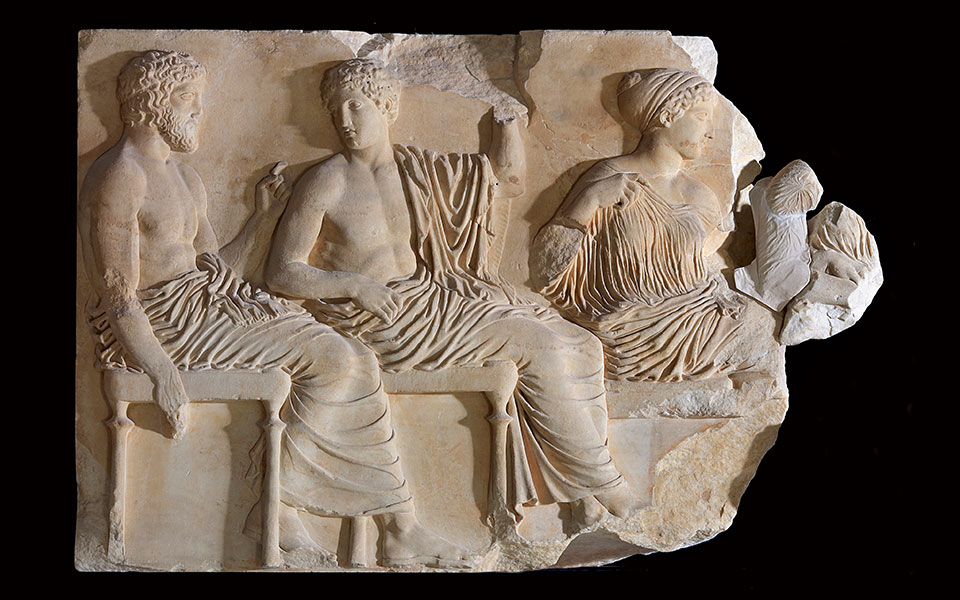Τhe Parthenon, constructed and decorated between 447 and 332 BC, was not only a magnificent, highly perfected votive offering and public monument to the Athenians’ divine patroness Athena. It also served as a gigantic message board laden with various visual narratives or scenes carved in marble that reminded both the local citizenry and the city’s many visitors of Athens’ mythological roots, its glorious past and its progressive, dynamic present.
The Parthenon, outside of its religious functions, was essentially a sculpture gallery that presented both full statues in its triangular pediments, as well as individual and conjoined panels carved in relief and mounted outside its colonnade as metopes, and around the exterior walls of its cella as a continuous Ionic frieze.

© Shutterstock
The eastern pedimental statuary depicted the birth of Athena, while the western pediment was an even more conspicuous showcase for sculptures representing the mythical contest between Athena and the sea god Poseidon. Athena won the contest by offering the Athenians the precious olive tree, which ensured their basic survival and became a pillar of their economy. Poseidon tried to provide water, but only succeeded in releasing a salt-water spring when he struck the Acropolis with his trident.
The metope panels on the Parthenon’s exterior façades depict the Greeks defeating the Trojans (north side); the legendary Lapith people fighting with unruly wedding guests, the centaurs (south); the Greeks battling the Amazons (west); and, in another battle, the Greeks resisting the Giants (east).
These age-old myths had previously appeared on many other Greek temples and were well-known stories intended to send a message that the Greeks had created order out of chaos, defeated the wildness of nature and were militarily victorious over their enemies. In the particular case of the Parthenon, these scenes glorified especially the Athenians, who are heralded as the greatest among equals and who had recently led their allies in defeating the Persians.

© Shutterstock
The Parthenon frieze has traditionally been interpreted as depicting the Panathenaic Procession, an annual festival held in honor of Athena, during which the wooden cult statue of Athena, kept in the adjacent Erechtheion, was refreshed with a new woolen cloak (peplos). An alternative interpretation suggests that the eastern panels of the frieze depict the mythical Athenian king Erechtheus offering his daughter as a sacrifice to ensure Athens’ success in its war against the Eleusinians.
The first view emphasizes the Athenians’ reverence for Athena, while the second appears to promote the idea of total sacrifice by the city-state’s citizens for the sake of Athens’ survival and continued good fortune.
Democratic reforms by Classical Athens’ progressive leader Pericles have also been suggested as possible sub-themes in the Ionic frieze. Thus, horsemen allude to the newly democratized knighthood – in which Pericles’ government subsidized less fortunate, want-to-be knights who needed financial assistance in acquiring the necessary equipment to become knights.
Female figures in the frieze remind viewers of Pericles’ recent elevation of women’s status as members of Athenian society – since now both an Athenian father and mother would be required to claim Athenian citizenship.











